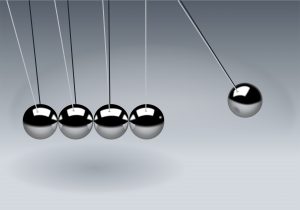Introduction
In classical homeopathy, we view symptoms differently than conventional medicine and some other alternative therapies. Samuel Hahnemann described in the ‘Organon’ that a symptom is anything that is an expression of disease. It is not a symptom if it is a healthy attempt to restore balance. In classical homeopathy, context (considering the circumstances), the degree of response (which can be too much or too little), and scope (beyond just symptoms that point to a specific medical diagnosis) are important. We also differentiate between reactions to natural and artificial diseases because only natural diseases can be treated with classical homeopathy.
What is a symptom according to classical homeopathy?
 In classical homeopathy, we have a specific way of viewing symptoms. In this article, we would like to explain what a symptom is according to classical homeopathy. Briefly defined, a symptom is an expression of disease. Hahnemann describes this, for example, in the sixth edition of the ‘Organon’ §7:
In classical homeopathy, we have a specific way of viewing symptoms. In this article, we would like to explain what a symptom is according to classical homeopathy. Briefly defined, a symptom is an expression of disease. Hahnemann describes this, for example, in the sixth edition of the ‘Organon’ §7:
‘Now, in a disease, … nothing else can be found except the symptoms. Then, … it must be those symptoms alone by which the disease demands and points to the medicine that can help it.’
And it is only based on these symptoms that a suitable remedy can be found for a patient. Interestingly, he regularly uses the word ‘morbid’ or ‘sickly’ in the ‘Organon’ in relation to symptoms, further emphasizing that it is about expressions of disease and nothing else. Later in this article, it will become clear why this is important.
At first glance, this may seem obvious, but there’s more to it, as we’ll see. First, from the perspective of classical homeopathy, it’s important to consider the context when determining whether something is a symptom or not. Additionally, symptoms in classical homeopathy encompass more than what conventional medicine considers symptoms. Thirdly, we must distinguish between the effects of artificial and natural diseases. We’ll explain these three points further below.
Another article describes, in broad strokes, how classical homeopathy views disease and health.
The context of symptoms
 By context, we mean that the same bodily reaction can be a symptom in one situation and not in another. For instance, if you bump your knee and experience immediate pain afterward, that’s a relatively healthy response meant to warn you to be careful with your knee for a while. If you’ve received bad news during the day and can’t sleep at night because you’re dwelling on it, that’s a normal and healthy reaction to what happened that day. And if you’ve just run five kilometers, it’s normal to be out of breath and have a high heart rate. All these reactions are natural and normal responses to circumstances. In this context, there are no symptoms. The body is trying to restore balance healthily and effectively after a disturbance or external influence.
By context, we mean that the same bodily reaction can be a symptom in one situation and not in another. For instance, if you bump your knee and experience immediate pain afterward, that’s a relatively healthy response meant to warn you to be careful with your knee for a while. If you’ve received bad news during the day and can’t sleep at night because you’re dwelling on it, that’s a normal and healthy reaction to what happened that day. And if you’ve just run five kilometers, it’s normal to be out of breath and have a high heart rate. All these reactions are natural and normal responses to circumstances. In this context, there are no symptoms. The body is trying to restore balance healthily and effectively after a disturbance or external influence.
However, if you haven’t bumped your knee and still have pain there, that’s a sign that something is wrong with your health. If you frequently can’t sleep at night due to worrying about non-existent problems, that’s also a symptom. And if you have a high heart rate and are out of breath without exertion, that’s also a sign of an issue. In this context, there are symptoms.
Thus, the same bodily reaction (knee pain, sleeplessness, shortness of breath, and high heart rate) can be an expression of disease and therefore a symptom in one situation, while in another situation, it’s not an expression of disease and thus not a symptom.
Excessive or insufficient response as a symptom
It is interesting that symptoms often involve a response that is either too much or too little compared to an optimal reaction. If someone, for instance, responds excessively irritated to a comment or situation, that falls into the ‘too much reaction’ category. There is ‘too little reaction’ when a patient, for example, does not defend themselves when they are expected to do so. The diagram below illustrates this schematically.
In the center is the area of normal reactions to circumstances. These are not symptoms. In the diagram, this is, for example, reaction A. A patient may also not be strong enough, too weak, or react too little. We call these symptoms. These symptoms are on the left of the center in the diagram. The body may also respond too intensely, disproportionately, excessively, and so on. These symptoms are on the right side of the diagram.

In the center is the area of normal reactions to circumstances. These are not symptoms. In the diagram, this is, for example, reaction A. A patient may also not be strong enough, too weak, or react too little. We call these symptoms. These symptoms are on the left of the center in the diagram. The body may also respond too intensely, disproportionately, excessively, and so on. These symptoms are on the right side of the diagram.
It’s important to realize that symptoms occur in gradations. A symptom may involve a little too little reaction to circumstances (A) or a lot too little (B).
One of the challenges for a homeopath is to ask yourself constantly, while listening to what the patient says, whether something is a normal reaction or a symptom. Only symptoms are useful in homeopathic treatment.
After the patient has taken the correct remedy, symptoms often return to the normal range. In some cases, there is an increase: the patient, for instance, becomes more assertive, or they defecate more frequently (when constipation was an issue). For some symptoms, this means a decrease (the patient becomes less irritated or experiences less pain).
Scope of symptoms
 In classical homeopathy, we consider all expressions of disease as symptoms. From this perspective, we also consider things that may not be as important to a conventional doctor. For example, if someone sweats excessively and the level of activity, temperature, or a medical cause cannot explain it, the sweating may be an expression of disease and thus a symptom that may be important to a homeopath. Another example is when someone craves certain foods. If such a patient cannot resist, they may consume a lot of, for instance, fat, salt, bitter foods, eggs, and so on. For a doctor, this may not be so important, but it indicates to a homeopath that something is not well-balanced.
In classical homeopathy, we consider all expressions of disease as symptoms. From this perspective, we also consider things that may not be as important to a conventional doctor. For example, if someone sweats excessively and the level of activity, temperature, or a medical cause cannot explain it, the sweating may be an expression of disease and thus a symptom that may be important to a homeopath. Another example is when someone craves certain foods. If such a patient cannot resist, they may consume a lot of, for instance, fat, salt, bitter foods, eggs, and so on. For a doctor, this may not be so important, but it indicates to a homeopath that something is not well-balanced.
Many people don’t realize that things a patient cannot resist can also be symptoms that are important to a homeopath. Based on these, a homeopath may think of a particular remedy for the patient.
A third example is when some people say they can’t fall asleep unless they lie in a specific position. They can’t explain it, but one patient must always lie on their stomach to fall asleep, while another must always lie on their right side. From a homeopathic perspective, this could also be a symptom.
A doctor will mainly focus on things pointing to a specific medical diagnosis, such as pain, inflammation, structural changes, and functional limitations. In a sense, you could say that the scope is narrower compared to classical homeopathy.
Symptoms as reactions to artificial and natural diseases
Lastly, let’s discuss the difference between reactions to a natural disease versus reactions to an artificial disease. First, let’s clarify what a natural and artificial disease is according to classical homeopathy.
A natural disease is a disruption or suboptimal functioning of your health. It is endogenous and independent of circumstances. Circumstances may have contributed to you becoming ill, but they are not currently responsible for the natural disease.
In an artificial disease, circumstances maintain a certain reaction of the organism. If those circumstances disappear, the reactions will also disappear. Here are a few examples:
- Fatigue because you’re kept awake by noise from construction work next door. Once the construction is over, the fatigue will go away.
- Tingling due to a vitamin B deficiency because you don’t have access to the right food. Once you get sufficient vitamins by having access to proper food, the tingling will stop.
- A known side effect of simvastatin is muscle pain, weakness, and cramps. These complaints usually go away after stopping the medication (which is not an advice to stop taking this or any other conventional medication).
 It’s important to understand that homeopathy can only cure natural diseases. Many people (and even some homeopaths) don’t realize that we can’t cure everything. Artificial diseases are often the result of blockages and must be addressed differently than with a homeopathic remedy. Today, advertising, websites, forums, etcera, provide information that gives the illusion that everything is attainable and that we don’t have to endure any discomforts. Unfortunately, this is not the reality and is based more on commercial interests.
It’s important to understand that homeopathy can only cure natural diseases. Many people (and even some homeopaths) don’t realize that we can’t cure everything. Artificial diseases are often the result of blockages and must be addressed differently than with a homeopathic remedy. Today, advertising, websites, forums, etcera, provide information that gives the illusion that everything is attainable and that we don’t have to endure any discomforts. Unfortunately, this is not the reality and is based more on commercial interests.
Therefore, when selecting the right remedy, you should focus on symptoms and not on expressions of an artificial disease (see also the article – What is disease according to classical homeopathy?). The effects of an artificial disease should be tackled by looking at the circumstances or factors that cause it.
The difference is sometimes difficult to determine because there are situations where it’s not clear if an expression of an artificial disease or symptoms of a natural disease is involved. For instance, it’s conceivable that someone taking simvastatin already suffers from muscle cramps. Or someone may be irritated due to (temporary) problems in their personal circumstances, or they may quickly become irritated on their own. However, using good anamnesis techniques often allows you to distinguish between the two. For example, you could ask about muscle cramps before they started taking simvastatin or ask about situations where someone shouldn’t be irritated or falls outside the problematic circumstances.
Are all symptoms used to find a suitable remedy?
The above doesn’t mean that all symptoms are used to find a remedy. For finding a remedy, we mainly use symptoms that are PQRS, intense, and causal. The concept of totality is also interesting in this context.
Why is this important for classical homeopathy training?
When searching for the appropriate remedy, it’s important to consider what a symptom is and what it is not. The expressions of an artificial disease cannot be used to find a remedy, and certainly cannot be treated with a potentized remedy.
Unfortunately, since the mid-1990s, there has been a trend where the choice of a remedy is based on things other than the actual symptoms of a patient. For instance, during training, continuing education, publications, and other expressions, the choice of remedy is often based on hobbies, clothing, character, etcetera. But it should be clear that these are not real symptoms, and therefore the correct remedy cannot be found this way. Since the mid-1990s, we have unfortunately seen an increasing focus on symbolism and interpretation of things that aren’t symptoms. We don’t welcome these developments. Patients should not be dependent on how a homeopath interprets their character, hobbies, clothing, hair color, favorite color, pet, etcetera.
In our training, you learn to clearly distinguish between symptoms, expressions of an artificial disease, and other matters. You do this, among other things, by studying a lot of successful case studies in various ways. We teach you to distinguish adequately between speculation and facts, without losing sight of the individual patient.
Sources:
- Hahnemann, Samuel. Organon of Medicine. Translated by William Boericke, 6th ed., B Jain Publishers, 2004.







